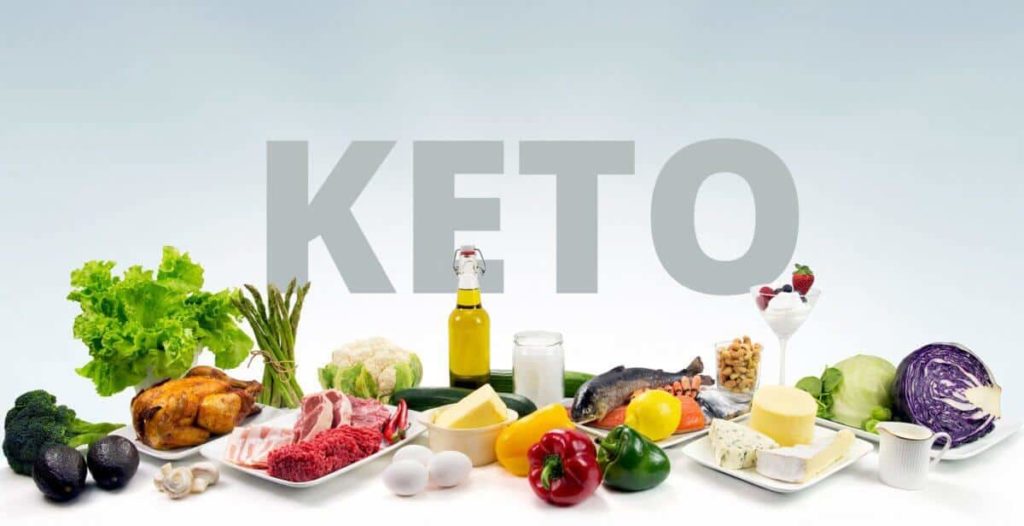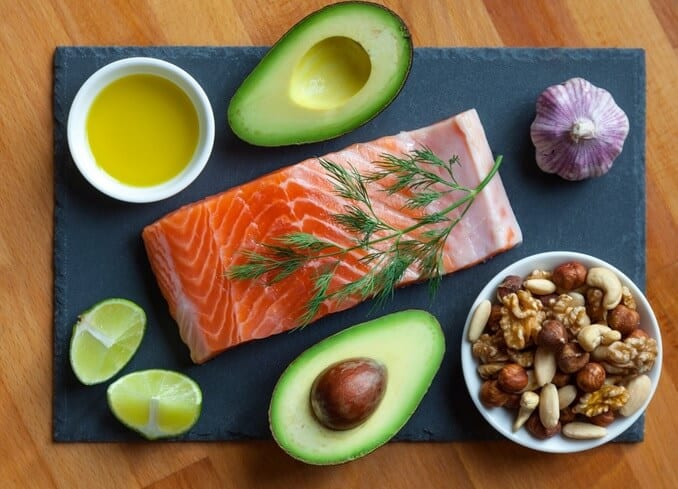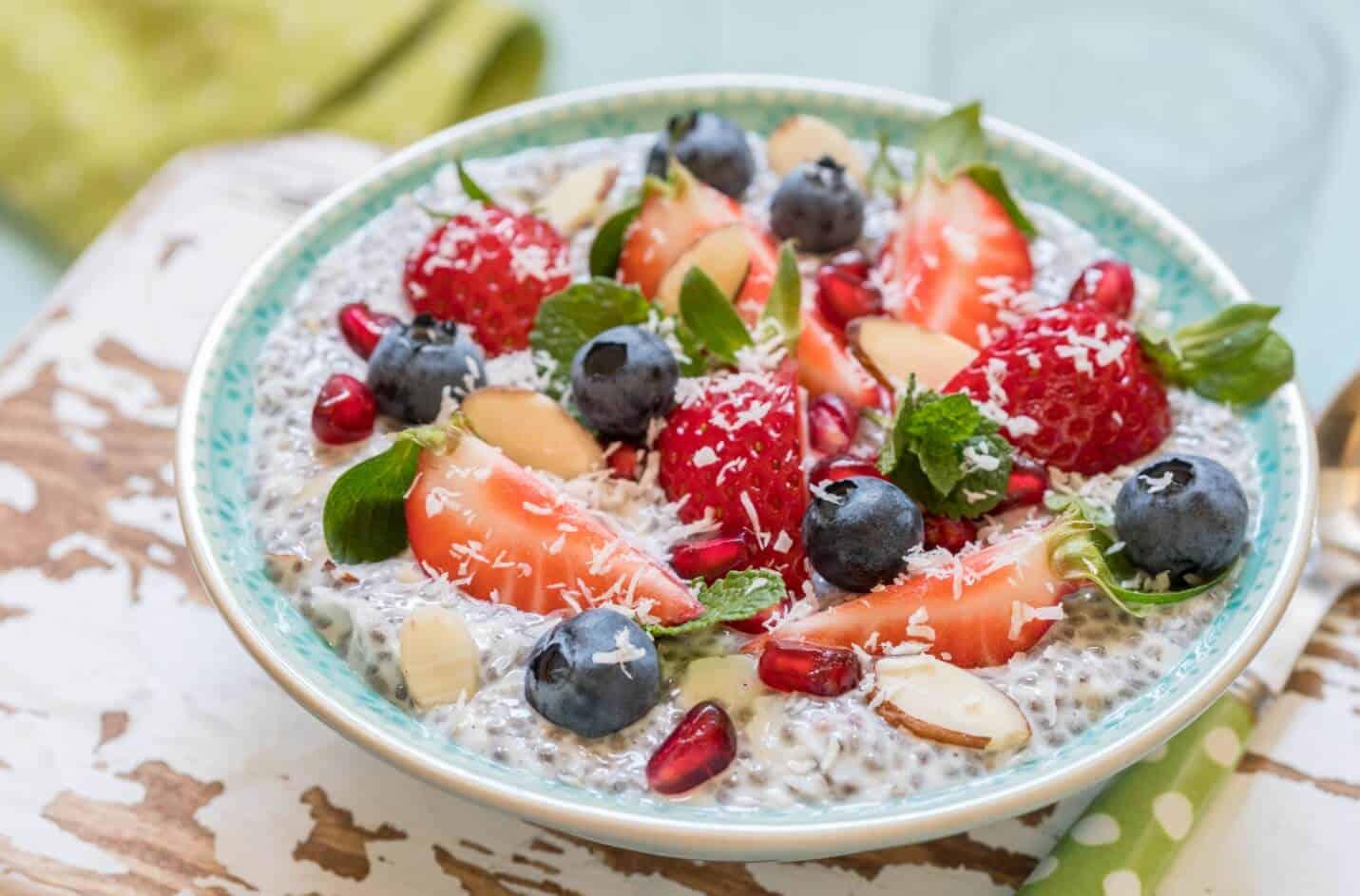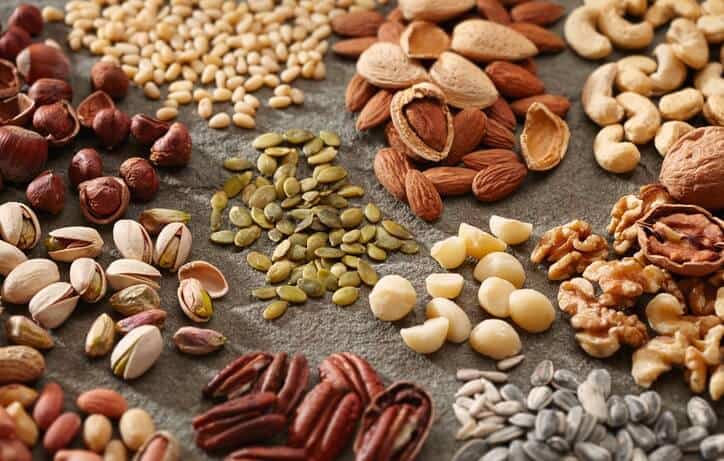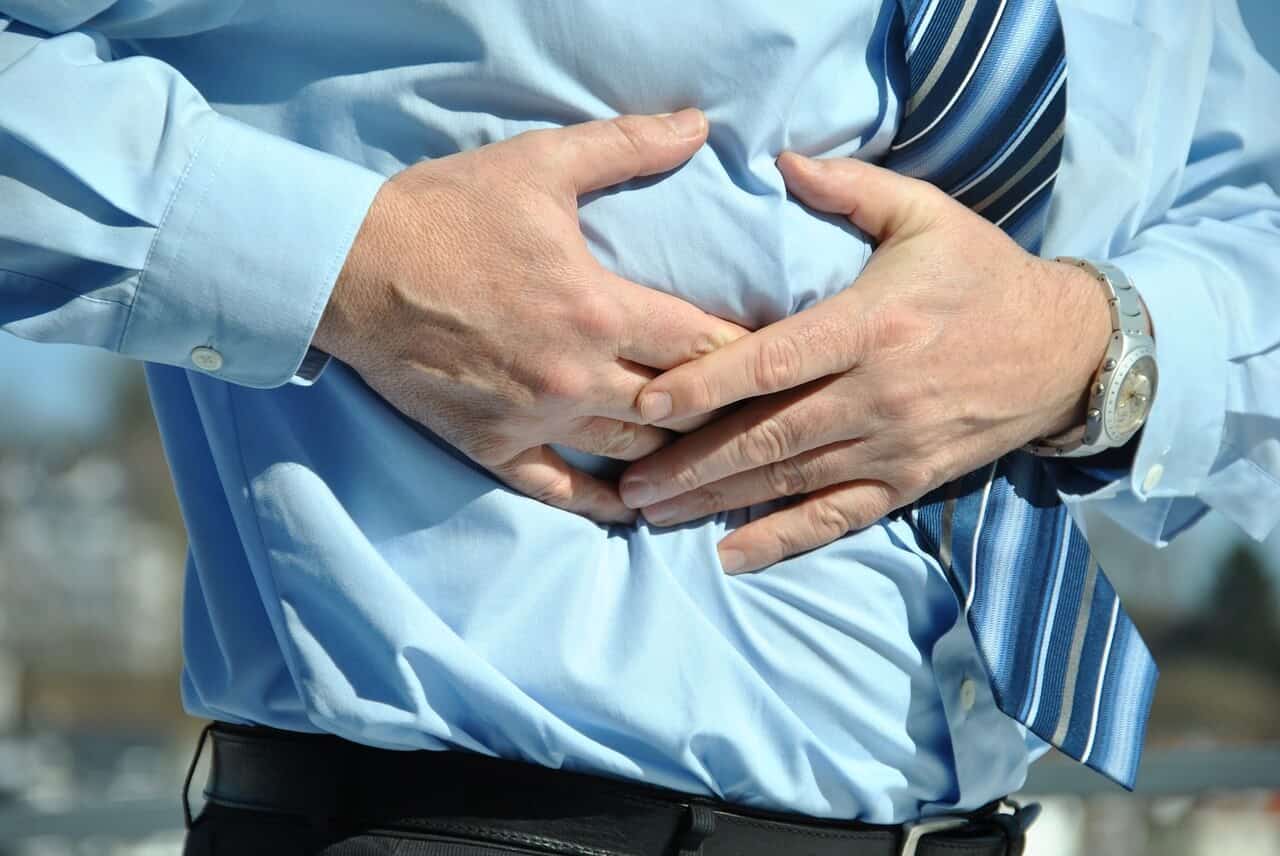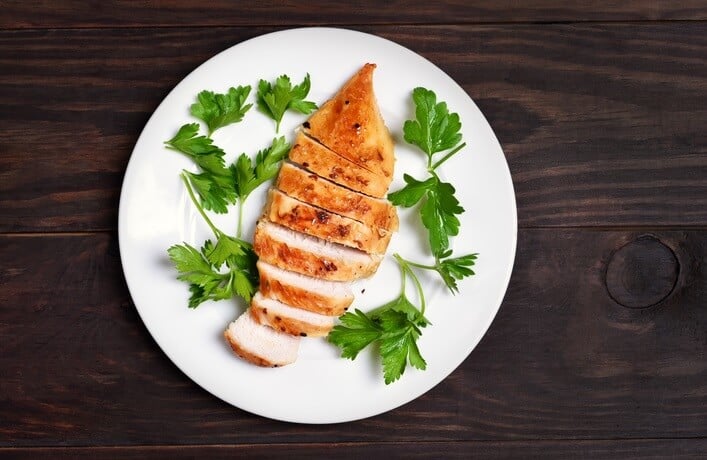Heard of the ketogenic diet? It’s a weight-loss method that cuts the carbs so you lose weight faster.
Unlike those fad weight-loss programs, there’s scientific research backing the effectiveness of the ketogenic diet.
This step-by-step guide tells you everything you need to know, AND everything you didn’t know, about the ketogenic diet.
Ketogenic Diet | What is Keto and the Best Keto Diet Foods? Video Review
What is a Ketogenic Diet?
Often referred to as “keto,” the ketogenic diet consists of two simple principles: low carbs and high fats. In that respect, it’s similar to the well-known Atkins diet.
In a nutshell, you cut out carbs from your diet and, instead, chow down on fats. This can increase your metabolic rate via ketosis.
Food tracking is especially important when you start a ketogenic diet to ensure you’re getting the right amount of carbs, proteins, and fats.
Noom is a weight-loss app with a database of foods managed by nutritionists so you know your getting accurate nutritional values.
The final result is that your body becomes a fat-burning machine. This not only helps you lose weight; the diet helps convert fat in your liver into ketones.
What are ketones?
Ketones are energy sources. When glucose is in limited supply, ketones are used as fuel. The liver makes ketones as fats break down.
This gives your brain an extra supply of energy, helping you think better.
Bottom Line: The ketogenic diet consists of replacing carbs with high-quality fats. It boosts your metabolism, helps you burn fat, and produces much-needed ketones.
Types of Keto Diets
There are different ways of following the ketogenic diet. The most common, also known as the “Standard Ketogenic Diet” (SKD), involves eating moderate amounts of protein and fats. You keep your carb levels extremely low, usually at about 5%. The remaining 95% consists of 75% fat and 20% protein.
Another form of the ketogenic diet is the Cyclical Ketogenic Diet. In this variation, you have “refeeds” in which you can eat higher levels of carbs. You might have five high-fat ketogenic days followed by two days when you can eat a healthy amount of carbs.
There’s research showing those who refeed increase metabolic rate.
There’s also the High-Protein Ketogenic Diet; somewhat similar to the regular ketogenic diet. The difference is that you consume a lot more protein. The ratio is about 35% protein to 60% fat and 5% carbs.
One thing to keep in mind is that the standard and high-protein forms of the ketogenic diet are the only ones that have been the subject of extensive study.
Bottom Line: There are several different variations of the ketogenic diet. The most common (and the one with the most scientific backing) is the Standard Ketogenic Diet.
How the Ketogenic Diet Works
Following the ketogenic diet can help you lose weight.
According to the research, the ketogenic diet has greater weight-loss benefits than a simple, low-fat diet.
An additional benefit of the ketogenic diet is that it fills you up and is satiating. This helps you lose weight without struggling with hunger.
After following up with participants on the ketogenic diet, researchers found that they lost over twice the amount of weight as people who followed a low-fat diet.
So what makes the ketogenic diet better than a low-fat diet? In part, it’s because it provides your body with more protein, which is essential for good health.
Bottom Line: The ketogenic diet offers weight-loss results superior to low-fat diets. Plus, you don’t have to starve yourself!
Ketogenic Diet Foods to Avoid
The gist of the ketogenic diet is to limit your consumption of carbs. The best way to keep track of your carb intake is through food tracking.
The weight-loss app Noom is clinically proven to help you lose weight and keep it off, in part due to the ease of food tracking and the extensive food database. You can try it out with a free trial offer.
These are some of the biggest foods to stay away from.
Sweets
Anything with high amounts of sugar, processed sweets like candy, soda, cake, and ice cream.
Fruit
Although fruit is natural and has a lot of vitamin C, it is super high in sugar. One fruit you can eat without worry is berries (in moderate portions).
Starches
Anything made out of white flour or wheat (pasta, bread, cereal) is high in carbs and should be avoided.
Root Vegetables
Potatoes, carrots, and similar vegetables are surprisingly chock-full of carbs.
Diet Products
Although many diet products claim to be healthy, the truth is that most are incredibly processed and loaded with carbs.
Bottom Line: Many foods available at your local grocery stores contain very high amounts of carbs. Foods to avoid include candy, soda, starches, and most fruits.
What to Eat on the Ketogenic Diet
Now you’re asking yourself “What can I eat?” A great thing about the ketogenic diet is that there’s a huge variety of delicious foods to choose from. As a matter of fact, the ketogenic diet allows you to munch on some of your favorites—delicious meals you’d have to avoid under a low-fat diet.
Meat
This is the big one that the ketogenic diet instructs you to chow down on. Eat red meat, chicken, fish (the fatty kind, like trout and salmon), turkey, sausage, steak—without any guilt whatsoever!
Cheese
Unprocessed cheeses like goat cheese, blue cheese, and cheddar are good keto foods, but remember everything in moderation.
Eggs
Like omelets? Scrambled eggs? No problem! They’re perfectly acceptable when following the ketogenic diet!
Nuts
Nothing quenches an appetite like munching on crunchy nuts. Options like walnuts and almonds are full of flavor and help you feel full.
Avocados
These green fruits (yes, fruits!) are one of the best things you can add to your diet. They have incredible health properties and they taste delicious in a broad spectrum of dishes.
Low-carb Vegetables
Green vegetables are good. You can also add tomatoes, peppers, and onions to your “to-eat” list.
“Healthy” Oils
Don’t fret when it comes time to cook. Use healthy oils without remorse. There’s extra virgin olive oil, avocado oil, and even coconut oil to choose from!
Condiments
Feel free to use pepper, salt, and spices without sugar. The ketogenic diet lets you eat well. No sacrificing the flavor!
Bottom Line: The ketogenic diet allows you to eat your favorite foods: meat, fish, cheese, eggs, and veggies are all fair game!
Ketogenic Meal Plan Ideas
The ketogenic diet gives you a world of food options, including:
Keto Foods for Breakfast
- A healthy milkshake made from keto-friendly ingredients like blueberries or peanut butter
- Yogurt (sugar-free, of course) flavored with cocoa powder or a non-sugar sweetener
- A cheese omelet made with avocados, onion, and salsa
- Steak and eggs with a fresh salad on the side
Keto Lunch Ideas
- Shrimp salad; throw in some avocado and olive oil for extra flavor
- Beef stir-fry with a liberal helping of your favorite veggies
- A cheeseburger with guacamole
- An appetizing salad with grilled chicken can be made even more mouthwatering with bits of feta cheese.
Keto Foods for Dinner
- A warm plate of meatballs with cheddar or mozzarella cheese on top and veggies on the side
- Smoked salmon with asparagus cooked in butter
- Parmesan cheese-covered lamb chops with a side of broccoli
As you can see, the possibilities truly are endless. For the best health benefits, rotate out your choices of veggies and meats. That way, you provide your body with the full range of nutrients each food offers.
Bottom Line: Unlike other diets, the ketogenic diet doesn’t force you to choose nutrition over flavor. You get both. In fact, you get to eat many of your favorite foods.
Low GI Snacks
The ketogenic diet isn’t about starving. It’s about living (and eating) fully. And what’s life without some tasty snacking?
Here are some of the best keto-friendly snacks:
- Dark chocolate (make sure it’s at least 90%)
- Full-fat yogurt with no added sugar
- A few pieces of cheese
- Seeds or nuts
- Strawberries and cream
- Celery dipped in guacamole or salsa
- A low-carb milkshake
- A couple of hard-boiled eggs.
Bottom Line: There are many ways to snack when you’re on the ketogenic diet. You can eat cheese, eggs, dark chocolate, yogurt, and more. As long as the carb level is low, the sky’s the limit!
What Can You Eat Out on a Ketogenic Diet?
One of the biggest advantages of the ketogenic diet is that it’s super simple to turn restaurant meals into ketogenic dishes. Just remove (or avoid) the high-carb elements like bread, pasta, or rice.
After all, the centerpiece in most restaurant entrées is meat—which is exactly what you want when you’re on the ketogenic diet. It’s just a matter of replacing the high-carb food with veggies or a salad.
Everybody loves burgers. To make your burger keto-friendly, you can eat it bun-less. The ketogenic diet even encourages you to add plenty of cheese and bacon to your burger!
When it’s time for dessert, look for combinations of double cream, cheese, and berries. All have lower carbs and fit into a ketogenic diet.
Bottom Line: Look for meat, eggs, and fish. Ditch the carbs and order veggies instead. Cheese, berries, and cream are excellent for when you have a sweet tooth.
Remember to log your food with an app like Noom so you know exactly how many carbs you’ve eaten to stay on track.
What are the Keto Diet Side Effects?
The ketogenic diet is safe and healthy for the vast majority of people. Some experience side effects as their body adjusts to the new diet.
This adaptation period, known as “keto flu,” generally lasts only a few days.
Symptoms associated with keto flu are hunger, lower energy levels, difficulty concentrating, nausea, and slight sleeplessness.
The best way to mitigate keto flu is to gradually adopt your new diet. Don’t abandon carbs cold turkey! Rather, follow a lower-carb diet for a few weeks. Your body gets used to the change, making the transition easier.
Another possible side effect is that your water and mineral balance goes out of whack.
When you first start out, be sure to eat until you feel full. You don’t want to limit your calorie intake too much.
Bottom Line: Although there are mild side effects when you first begin the ketogenic diet, they can be reduced. It helps to work into the diet and to take mineral supplements.
What are the Best Keto Diet Products?
There’s no rule saying you have to take any supplements when you’re on the ketogenic diet. However, you may find it useful to incorporate some of the following:
Creatine
This can be helpful if you’re doing exercise along with your diet. Creatine may boost your physical performance.
MCT Oil
MCT Oil added to yogurt or drinks helps increase energy and ketone levels.
Caffeine
Healthy doses of caffeine increases metabolism and promotes weight loss.
Whey
Whey is a good source of protein that you can add to your shakes and yogurt.
Bottom Line: When you’re on a ketogenic diet, you can see better results by taking some supplements. A few of the most beneficial are whey, caffeine, creatine, and MCT oil.
Questions about the Ketogenic Diet Weight-Loss Plan
You have a lot of questions regarding the ketogenic diet. Here are some of the ones we get most often.
Does the keto diet cause muscle loss?
While any diet might lead to muscle loss, that’s an unlikely occurrence with this diet. Remember that under the ketogenic diet, you eat high amounts of protein and healthy fats to help minimize any potential muscle loss.
Keeping the right balance of protein and fats is crucial to successfully following a ketogenic diet. Tracking foods with Noom is a proven weight-loss option.
If you’re lifting weights and trying to build muscle, the ketogenic diet may not be the best choice for you. Instead, consider a moderate-carb diet.
Are carbs off-limits forever?
You don’t have to stay away from carbs for the rest of your life. It’s only for the first two to three months that you need to keep a close watch on your intake. You can have carbs in moderation.
Why do I feel tired on the Keto Diet?
If you experience constant fatigue, it may be that you’re not using fats and ketones. You will need to lower your intake of carbs and take MCT oil or ketone supplements.
Does eating keto foods cause bad breath?
Ketosis causes bad breath. This happens when beginning a ketogenic diet. You can get rid of it by chewing gum or drinking-flavored water.
Why does my urine have a “fruity” smell?
Your urine may acquire this smell due to byproducts of the ketosis process.
Am I supposed to have digestion issues?
Some people get diarrhea or constipation as side effects during the first few weeks of the diet. If it doesn’t go away after that, you may need to eat more vegetables with a high-fiber content (peas, broccoli, Brussels sprouts). Magnesium supplements can also be helpful.
Do I have to track food on the ketogenic diet?
It’s best to track your macronutrient intake (carbohydrates, protein and fats) when following a ketogenic diet to make sure you are maintaining the right ratios. (Remember only 5% carbs.)
The extensive food database with Noom makes it easy to track all your favorite ketogenic foods.
What Users Are Saying
“I’ve been eating strictly Keto for the past 4 months. My glucose levels are super controlled. No highs or lows. It’s amazing how cutting bread out of your diet solves a lot of issues. Some people are not educated on this subject. Ketones are NOT the same as eating Keto. You’re body can function very well with just carbs from vegetables and fruit. Bread is not needed.”
“I just quit after two months of keto and, after a really uncomfortable amount of time feeling miserable (keto flu, constipation, sweaty constantly, muscle cramps) am now just watching what I eat to much better results. I did lose quite a bit at first on keto then averaged out to the standard 2 poundsish a week – I’m getting the same results but without all the gross side effects. Nutrient intake’s the biggest issue for me – I was cramping up constantly because, no matter how much green leafy veggies I ate, I never got enough potassium (and supplements provide a max 2% of your recommended allowance), not a problem now at all. Charting a few weeks into my more sensible diet’s showing similar results that’s recently accelerated after I massively increased my fruit and veg intake, without the discomfort and honest expense of a protein/fat heavy diet (without the concern that a tiny slice of b-day cake will cause me to gain 5 pounds while feeling miserable). Most concerning with keto was what I’d call an “awareness” of my heart – palpitations, exhaustion, a weirdly high resting heart beat, etc – and I wasn’t pounding high sodium lunch meat either. I just feel much better these days.”
“I lost 80+ pounds on keto in about 8 months without working out and I was NEVER hungry. Unfortunately when I went back to training I had no energy and went back to carbs. Personally, I think for someone that isn’t active and has no interest in being active, then keto is a viable choice.”
Bottom Line About the Ketogenic Diet?
Everyone’s health situation is different. The people who most benefit from the ketogenic diet are those who have obesity, or excess body fat. It also helps those who want better metabolic health.
If you want to build muscle mass, choose a diet that includes a moderate amounts of carbs.
The ketogenic diet works. It can help you lose weight, but you have to follow it day in and day out.
If you put in the effort, the ketogenic diet can help you achieve lasting weight-loss results and amazing health benefits.
Article Sources
- https://noom.8utb.net/c/1720052/500038/8591
- https://noom.8utb.net/c/1720052/500038/8591
- https://noom.8utb.net/c/1720052/500038/8591
- https://noom.8utb.net/c/1720052/500038/8591
- https://noom.8utb.net/c/1720052/500038/8591
- https://www.ncbi.nlm.nih.gov/pmc/articles/PMC3217855/
- https://noom.8utb.net/c/1720052/500038/8591
- https://forum.jdrf.org/t/keto-diet/63245/5
- https://forums.anandtech.com/threads/long-term-isnt-keto-kinda-silly.2567373/
- https://forum.barbellmedicine.com/forums/unmoderated-forums/nutrition-discussion/36736-is-a-ketogenic-diet-complete-bs#post36753
